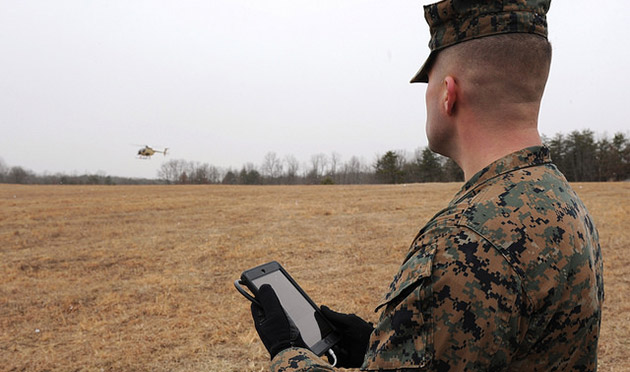Those who chuckled when Amazon's Jeff Bezos suggested he could one day deliver packages by drone might want to think again.
The U.S. Naval Research unit, led by Rear Adm. Matt Klunder, already is in the process of developing an unmanned helicopter that can be navigated by iPad. And that's just one way the unit is researching ways to revolutionize how the U.S. military fights, and saves lives.
"It will be able to deliver critical mission supplies, life-saving supplies. It could even be in our civilian sector used by first responders," Klunder said of the chopper project.
The U.S. Navy has successfully tested the unmanned chopper, part of a five-year, $100 million program. "For the first time we could put a system, about 60 pounds, on any helicopter, manned or unmanned. With a touch of one button on my handheld, I can direct that helicopter to an unprepared landing site."
What makes this new technology different is the autonomous nature of the helicopter. It's designed to think on its own, and the pilot has to do little more than enter the destination into an iPad app, while the helicopter does the rest.
"We actually put obstacles on the ground and it would come in all by itself and go -- 'that's an obstacle, can't land there, let's go here.' And it does it all by itself," Klunder explained. "It says, 'I've now judged the terrain and now I've decided that's the best place to land all by itself."
Predator drones, unlike the Navy's new "Autonomous Aerial Cargo Utility System," require constant navigation from a pilot, even if that pilot is halfway around the world. Outfitted on full-size helicopters, this new technology enables Marines to transport supplies from a base to troops in the field and return, using pilotless helicopters controlled by tablets.
The helicopter can take off with 5,000 pounds of cargo. It can also help rescue injured Marines on the battlefield. The new system was developed by Lockheed Martin Corp. and Aurora Flight Sciences.Read the rest of the story HERE and view a related video below:
If you like what you see, please "Like" us on Facebook either here or here. Please follow us on Twitter here.





No comments:
Post a Comment